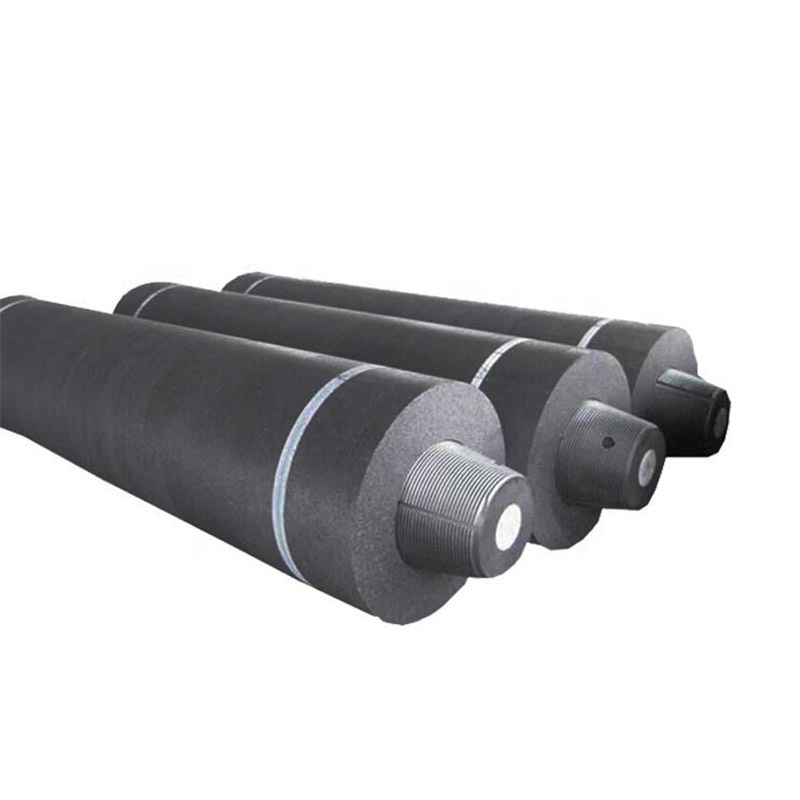The Science Behind Graphite Electrodes for LF: A Comprehensive Guide
Release Time:
Jun 24,2025
The Science Behind Graphite Electrodes for LF: A Comprehensive Guide Table of Contents 1. Introduction to Graphite Electrodes 2. What Are Graphite Electrodes? 3. Importance of Graphite Electrodes in Liquid Furnaces 4. The Manufacturing Process of Graphite Electrodes 5. Key Properties of Graphite Electrodes 6. Applications of Graphite Electrodes in Metallurgy 7. Challen

The Science Behind Graphite Electrodes for LF: A Comprehensive Guide
Table of Contents
- 1. Introduction to Graphite Electrodes
- 2. What Are Graphite Electrodes?
- 3. Importance of Graphite Electrodes in Liquid Furnaces
- 4. The Manufacturing Process of Graphite Electrodes
- 5. Key Properties of Graphite Electrodes
- 6. Applications of Graphite Electrodes in Metallurgy
- 7. Challenges in the Use of Graphite Electrodes and Solutions
- 8. The Future of Graphite Electrodes in Metallurgical Processes
- 9. Frequently Asked Questions
- 10. Conclusion
1. Introduction to Graphite Electrodes
Graphite electrodes play an essential role in the operation of liquid furnaces (LF), primarily in the steelmaking industry. These electrodes facilitate the transfer of electrical energy into the molten metal, allowing for efficient heating and refining. As industries evolve and demand for quality steel increases, understanding the science behind graphite electrodes becomes more critical.
2. What Are Graphite Electrodes?
Graphite electrodes are cylindrical structures made from graphite, a form of carbon. They are primarily used in electric arc furnaces and liquid furnaces for steelmaking. The electrochemical properties of graphite make it an ideal material for conducting electricity and facilitating high-temperature processes.
3. Importance of Graphite Electrodes in Liquid Furnaces
Graphite electrodes are crucial in liquid furnaces for several reasons:
- **Efficient Electrical Conductivity**: Graphite can handle high current loads, ensuring that the furnace operates efficiently.
- **Thermal Stability**: Graphite electrodes maintain their integrity at high temperatures, which is vital for prolonged operations in a liquid furnace.
- **Chemical Resistance**: They exhibit resistance to oxidation and other corrosive environments, enhancing their lifespan and reducing operational costs.
4. The Manufacturing Process of Graphite Electrodes
The manufacturing of graphite electrodes involves several critical steps:
1. **Raw Material Selection**: The process begins with selecting high-quality petroleum needle coke, as the quality of raw materials directly affects the performance of the final product.
2. **Mixing and Milling**: The coke is mixed with a binder pitch and milled into a fine powder. This mixture is crucial for achieving the desired density and electrical properties.
3. **Extrusion**: The mixed material is extruded into cylindrical shapes, forming the basic structure of the electrodes.
4. **Baking**: The extruded shapes are baked at high temperatures (around 1,200 to 1,500 degrees Celsius) to harden the material.
5. **Graphitization**: This step involves heating the baked electrodes to even higher temperatures (around 2,500 to 3,000 degrees Celsius) in an inert atmosphere to convert the carbon structure into graphite.
6. **Machining and Finishing**: Finally, the electrodes are machined to precise dimensions and subjected to quality control tests to ensure they meet industry standards.
5. Key Properties of Graphite Electrodes
Graphite electrodes possess several properties that make them suitable for use in liquid furnaces:
- **High Thermal Conductivity**: This property allows for efficient heat transfer during the melting process.
- **Excellent Electrical Conductivity**: Graphite’s ability to conduct electricity without significant resistance makes it indispensable in metallurgical applications.
- **Low Coefficient of Thermal Expansion**: This minimizes deformation during temperature fluctuations, maintaining the integrity of the electrode.
- **Mechanical Strength**: Graphite electrodes exhibit good mechanical strength, crucial for withstanding the physical demands of the furnace environment.
6. Applications of Graphite Electrodes in Metallurgy
The primary application of graphite electrodes is in steelmaking, particularly in electric arc and liquid furnaces. They are also used in other metallurgical processes, including:
- **Foundries**: For melting non-ferrous metals.
- **Production of Ferroalloys**: Graphite electrodes are essential in producing alloys that enhance steel properties.
- **Graphite Crucibles**: Used for melting and casting applications in high-temperature environments.
7. Challenges in the Use of Graphite Electrodes and Solutions
Despite their advantages, graphite electrodes face challenges that can impact their performance:
- **Oxidation**: Exposure to high temperatures can lead to oxidation, reducing lifespan. **Solution**: Using inert atmospheres can mitigate this risk.
- **Cracking and Breakage**: Mechanical stresses can cause cracking during operation. **Solution**: Proper handling and installation techniques, along with advanced materials, can minimize this risk.
- **Cost Fluctuations**: The price of petroleum coke can vary, affecting production costs. **Solution**: Developing alternative raw materials and recycling used electrodes can provide cost-effective solutions.
8. The Future of Graphite Electrodes in Metallurgical Processes
The future of graphite electrodes appears promising, with ongoing research aimed at enhancing their properties and performance. Innovations in material science may lead to the development of composite electrodes, which can offer better conductivity and reduced costs. Furthermore, as industries strive for sustainability, recycling initiatives and the use of greener materials in electrode manufacturing will likely become more prevalent.
9. Frequently Asked Questions
1. What is the lifespan of graphite electrodes?
The lifespan of graphite electrodes varies based on furnace conditions, but they typically last between 500 and 1,500 hours of operation.
2. Can graphite electrodes be reused?
Yes, graphite electrodes can be recycled and reused, depending on their condition after use.
3. What materials are used in manufacturing graphite electrodes?
The primary materials used are petroleum needle coke and binder pitch, which are processed and baked to form the final electrodes.
4. How do environmental factors affect graphite electrodes?
Environmental factors such as temperature fluctuations and exposure to corrosive materials can impact the performance and lifespan of graphite electrodes.
5. What advancements are being made in graphite electrode technology?
Research is focusing on enhancing the conductivity, reducing costs, and increasing the lifespan of graphite electrodes through innovative materials and manufacturing processes.
10. Conclusion
Graphite electrodes are integral to the efficiency and effectiveness of liquid furnaces in metallurgy. Understanding their properties, manufacturing processes, and applications helps industry professionals optimize their use. As technology evolves, the future of graphite electrodes looks bright, with exciting advancements on the horizon. By keeping abreast of these developments, we can better harness the power of graphite in metallurgical processes, ensuring that industries continue to thrive in an ever-changing economic landscape.
Keywords:
More information









